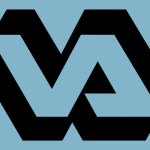Introduction
While the health care landscape has never been static, rarely has it seen such radical changes as it has within recent decades. The population of the United States continues to age, and the prevalence of chronic conditions such as obesity, diabetes, heart disease, and anxiety or depression contribute to a substantially increased demand for care. These factors are pushing a shift from a provider-centric model toward more efficient outcome-based models that put the patient at the center and heavily rely on primary care as the steward of patient care.
Primary care is a vital resource in dealing with the many factors altering the health care landscape. A 2019 study published in JAMA Internal Medicine found that for every 10 additional primary care physicians (PCPs) per 100,000 people, patients saw a 51.5-day increased life expectancy.
To promote further adoption of primary care-based models, the U.S. Department of Health and Human Services (HHS) and the Centers for Medicare & Medicaid Services (CMS) recently announced a set of payment models meant to further transform primary care through value-based options under the new Primary Cares Initiative. This voluntary initiative will test financial risk and payment arrangements for primary care physicians (PCPs) based on performance and efficiency, including five new payment models under two paths: Primary Care First (PCF) and Direct Contracting (DC). These models, slated to hit 20 states in 2020, seek to address the many difficulties in paying for, and incentivizing, valuable primary care within current payment models.
Want to publish your own articles on DistilINFO Publications?
Send us an email, we will get in touch with you.
Primary Cares Initiative payment models aimed at PCPs
All five of the payment models described in the Primary Cares Initiative are aimed at PCPs in the hopes of improving services at these linchpins within the health care system. These models can be grouped into two distinct categories: Primary Care First and Direct Contracting, and there are variations within these groups.
Primary Care First (PCF)
The two models categorized under PCF are aimed at relieving strained hospital resources and improving health outcomes through primary care. Both aim to more adequately reward PCPs through performance-based payment adjustments as an effective way to reduce the overuse of hospitals for health care needs.
- Primary Care First (PCF): The general PCF model will test whether risk- and performance-based payments for PCPs will reduce Medicare expenditures while preserving or improving quality of care. Under this option, payment will be provided to an advanced primary care site based on the size of its patient population (on top of a flat primary care visit fee), and adjusted based on performance within “easily understood, actionable outcomes,” according to CMS. The performance-based adjustment represents a potential quarterly upside of up to 50 percent of revenue as well as a potential small downside (10 percent of revenue).
- Primary Care First (PCF) – High Need Populations: In addition to the general PCF model, the Primary Cares Initiative includes a payment model specifically geared toward practices specializing in care for high-need patient populations. This includes patients with chronic care needs and a group the model refers to as seriously ill populations (SIP). This payment model creates an option for high-need patients without a primary care physician to receive care from a participating practice if the patient indicates interest.
Direct Contracting
The Direct Contracting path includes a pair of risk-sharing payment models, both voluntary, along with a third payment model for which CMS is seeking public input. Like the PCF models, these models aim to reward those providing more efficient, high-quality care. However, these models are geared toward organizations with experience serving broader patient populations rather than individual primary care practices. The three models are:
- Direct Contracting – Global Population-Based Payment (PBP): Participants in the Global model will take on the full share of risk. While they will be responsible for 100% of losses, they would also be eligible for to retain 100 percent of any savings achieved on the total cost of care for aligned beneficiaries.
- Direct Contracting – Professional PBP: Under the Professional model, participants will retain 50% of savings or incur 50% of losses accrued on the total cost of care for aligned beneficiaries.
- Direct Contracting – Geographic PBP: The Geographic model is similar to the Global model, but with an important caveat: Participants would accrue 100 percent of savings or losses on the total cost of care, but only for aligned beneficiaries within a target region. The stated aim for this model is to drive accountability to a local level so that communities can develop strategies tailored to more individualized needs; however, CMS is still seeking input on this model.
Additional health care initiatives strengthening primary care
As an entry point within the health care system emphasizing population health and management of chronic illness, primary care is an ideal means for improving our health care system on many fronts including access, cost of care, and quality of health care services.
Programs such as the Patient-Centered Medical Home (PCMH), the Comprehensive Primary Care (CPC+) program, and Medicare Advantage Value-Based Insurance Design (VBID) give health care stakeholders the means to promote triple and quadruple goals of allocating resources more efficiently. In addition to improving health outcomes and improving the experience of all individuals involved—including both physicians and patients.
Conclusion
The Primary Cares Initiative represents not just a single push to improve the health care system as a whole through primary care, but an overarching drive to do so via many initiatives and programs. Bringing more practices on board with initiatives such as the PCMH, CPC+, innovation within Medicare Advantage, and the Primary Cares Initiative will undoubtedly solidify the success of these and future programs, as stakeholders and policymakers come to a greater understanding of how to incentivize and create a path toward improved health care outcomes.
Source: The Healthcare Blog







